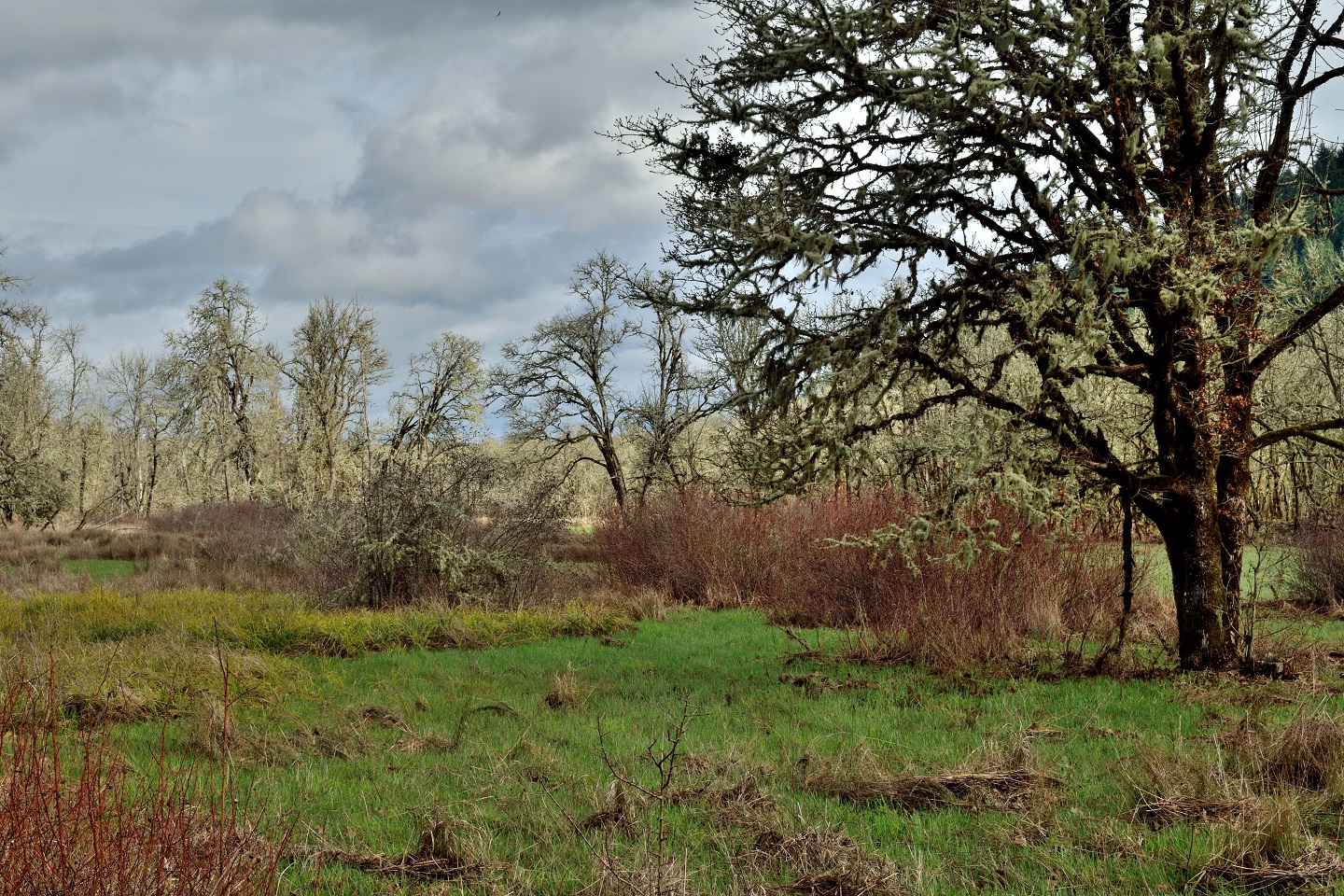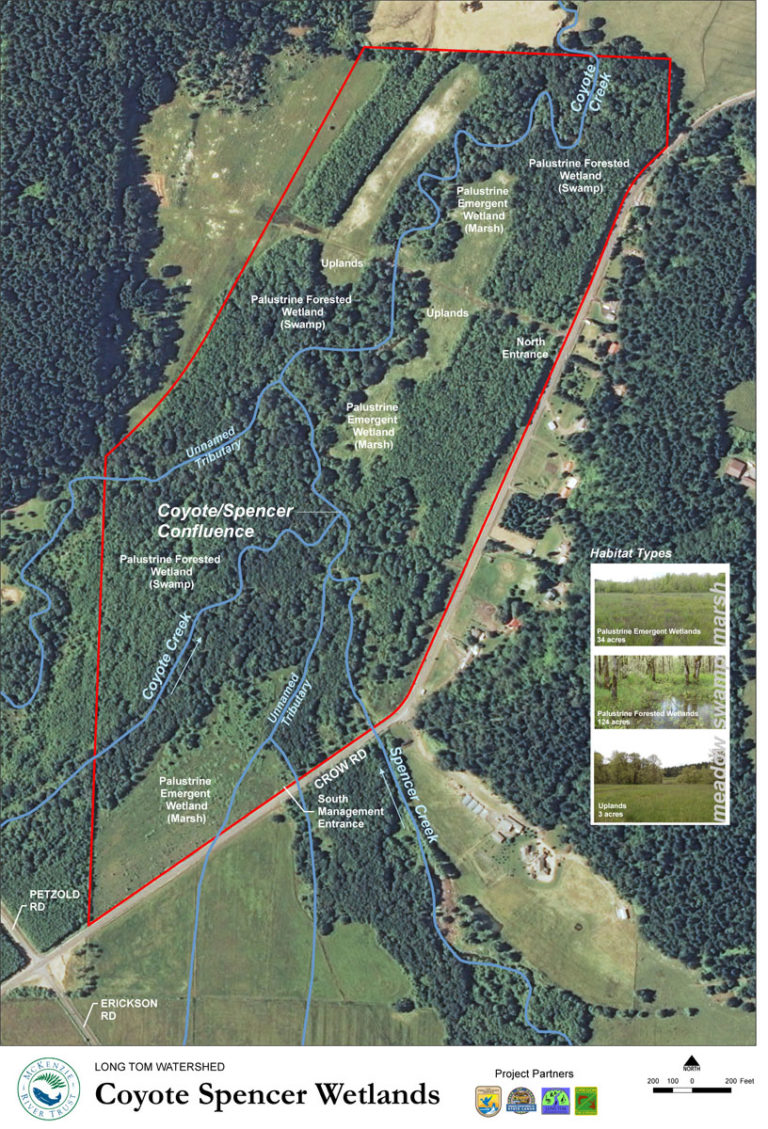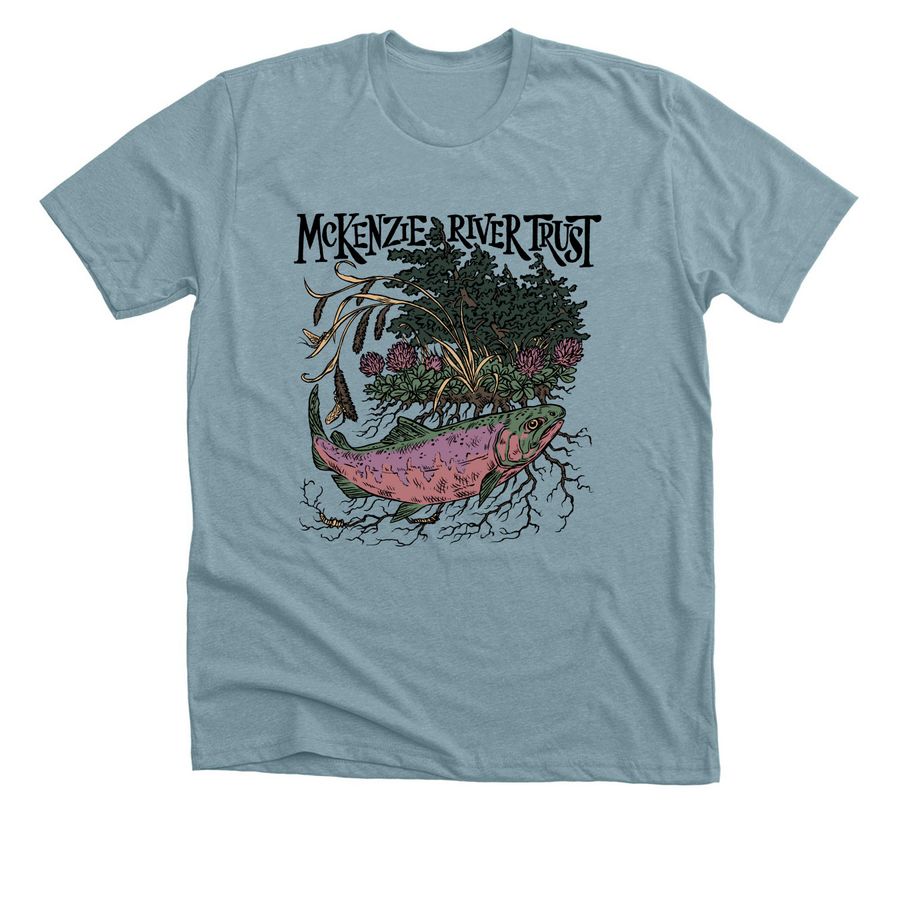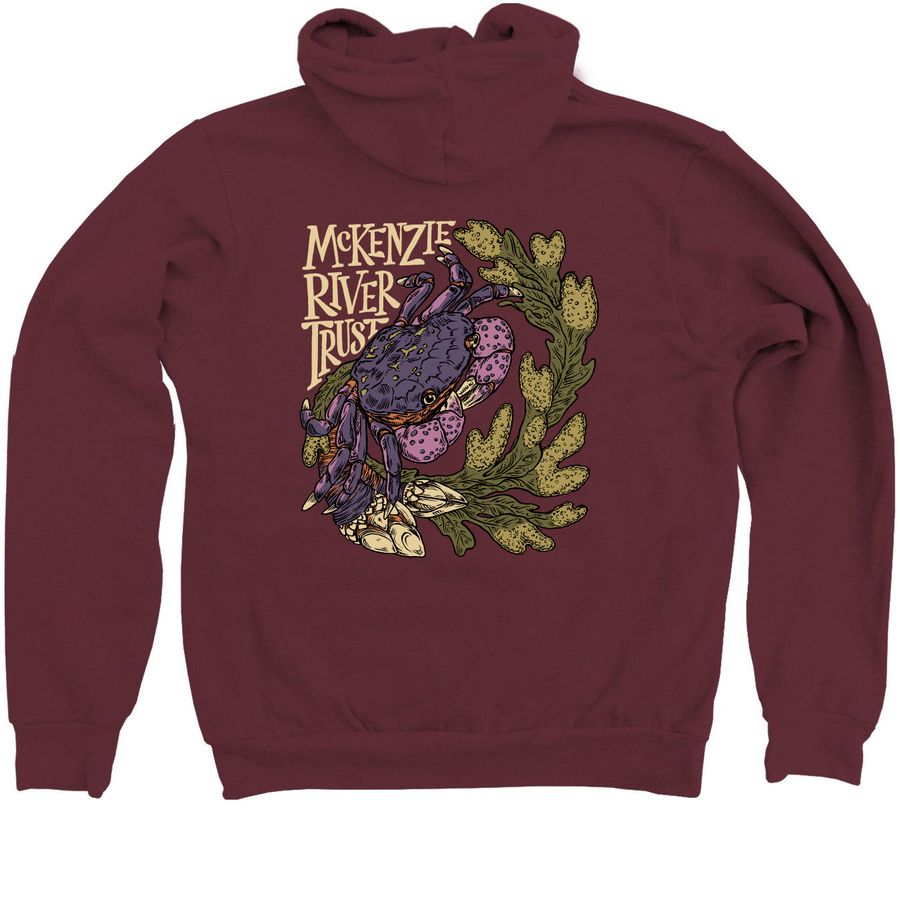Coyote Spencer Wetlands
Owned Property
The McKenzie River Trust purchased the property in fee title with the support of the Oregon Department of State Lands and U.S. Fish and Wildlife Service through a North American Wetlands Conservation Act (NAWCA) grant. The 2013 addition was purchased with NAWCA funds via our partners at Ducks Unlimited. In 2019, late neighbor Bob Griffith bequeathed an additional 30 acres of adjacent timberland to the long-term care of McKenzie River Trust.

the Coyote Spencer Wetlands complex contains over three miles of streams, 225 acres of mixed forest and wet prairie, oak woodlands, and upland prairie.
Meet Coyote Spencer Wetlands
Why It’s Important
Located where Coyote and Spencer Creeks come together in the Long Tom River Watershed, the Coyote Spencer Wetlands complex contains over three miles of streams, 225 acres of mixed forest and wet prairie, oak woodlands, and upland prairie. The exceptional variety of native plants on the property can be found in few other places in the Willamette Valley.
Why protect wetlands?
Sometimes called the ‘nurseries of nature’ and compared to coral reefs or rainforests for the diversity of life that they support, wetlands are exceptionally productive ecosystems. Wetlands are integral to healthy ecosystems because they filter sediments from water and provide habitat for numerous fish and wildlife species. Wetlands also offer nesting or feeding grounds to more than half of all North American bird species and provide a home for an estimated 31% of all plant species. Almost all remaining wetlands in this ecoregion have been degraded to some degree by altered water regimes, pollution, and invasive plants and animals. Wetlands in the Willamette Valley serve important ecological functions for communities, provide habitat for amphibians, turtles, birds, and fish, and offer key bird and fish migratory pathways. (Oregon Conservation Strategy, 2019). Coyote Spencer Wetlands offers a chance to help protect and restore some of this remaining critical habitat.
Between 1994 and 2005, the Willamette Valley saw a net loss of 3,932 acres of wetlands. In the Long Tom Watershed, a significant percentage of wetlands were historically converted to agricultural use. Large, intact expanses of wetlands, such those that make up the Coyote Spencer Wetlands, are increasingly rare, showing what the historic, pre-European settlement landscape in the Willamette Valley may have looked like. Permanently protecting remaining wetlands like this can enhance stream water quality, buffer floods, and provide an essential home and refuge for an array of native plants and animals. Rare native plants including Bradshaw’s lomatium, Oregon delphinium, thin-leaved peavine, and suncups have been identified on the property. Rare bird species observed on the property have included Vesper sparrow, western bluebird, white-breasted nuthatch, willow flycatcher, and yellow-breasted chat. Coyote Spencer Wetlands also hosts a herd of Roosevelt elk who pass through regularly. Other passers-by include black bear, cougar, and bobcats.







